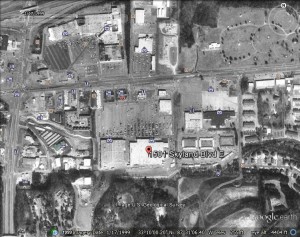History of the Business
On July 2, 1962, Sam Walton opened the first Walmart store in Rogers, Arkansas. The first Walmart was a general store in Rogers. However, Sam Walton had the vision to grow his store bigger. Walton wanted his store to have the cheapest prices possible, and this was the key to growing his stores nationwide. Walton would get cheaper prices from wholesalers like every other general store by buying their products in bulk. The other owners of general stores would pocket that extra profit that they accumulated from buying in bulk. Walton would use that reduction in price to pass the savings on to his customers. Walton’s small Walmart store in Rogers grew into twenty-four stores in 1967 with 12.7 million in sales. It took only 28 years for Walmart to grow into the nation’s number-one retailer in 1990 (1). Sam Walton always had a vision of taking his country across the world, and in 1991, Walmart opened their first international store in Mexico City (1). Today, Walmart employs 2.2 million employees worldwide. The company has expanded to more than 11,000 stores in 27 different countries.
Economic Impact
Although Walmart is the number one business in the nation in 2014 according to Fortune (2), the company does not rank in the top 25 list of revenue in the state of Alabama (3). The company has been hit by massive media criticism in recent times. The company keeps their prices low by making deals with wholesalers and also paying their employees low wages. These low wages are the reason why the criticism has started. In 2014, the company opened their stores early on Thanksgiving Day at 8 P.M. The workers who work for just above minimum wage wanted to spend time with their families on Thanksgiving. In 1,000 stores in America, workers protested the opening. Those 1,000 stores included the stores in Mobile, Birmingham, Montgomery, and Huntsville (4). Despite those protests and other media criticism, Walmart is the largest employer in America and made $476,294 million dollars in 2014 (2).
Ecological Impact
Walmart unveiled a sustainability initiative in 2005 to improve the company’s ecological impact. However, the initiative has not improved their impact. In 2005, the company has 18.9 million metric tons of greenhouse gas emissions. These numbers have continued to climb. In 2011, Walmart’s emissions grew to 21.5 million metric tons of greenhouse gas. In 2012, Walmart had 45.16 metric tons of greenhouse gas emissions per $1 million in revenue. One of their biggest competitors, Target, only had 41.9 metric tons per $1 million in revenue. In 7 years, the Walmart Corporation has not worked towards their promise of becoming more sustainable (5). However, the company has announced a goal to become completely powered by renewable energy. The company first started to harvest solar power in 2005. Since then, the company has over 335 solar farms to receive electricity for their operations. (6)
Sources:
- “Experience Walmart’s History.” Experience Walmart’s History. Walmart, 2015. Web. 23 Apr. 2015.
- “Global 500 2014.” Fortune. Fortune, 07 July 2014. Web. 23 Apr. 2015.
- Lucy Berry . “What Are the Largest Companies by Revenue in Alabama? Check out the List.” AL.com. Alabama Media Group, 24 June 2014. Web. 23 Apr. 2015.
- Ellen Mitchell. “Walmart Walkouts to Take Place in Alabama.” AL.com. Alabama Media Group, 20 Nov. 2012. Web. 23 Apr. 2015.
- Kate Sheppard. “Walmart’s Sustainability Results Don’t Match Promises, Report Finds.” The Huffington Post. TheHuffingtonPost.com, `2 Nov. 2013. Web. 23 Apr. 2015.
- “Renewable Energy.” Walmart. Walmart, n.d. Web. 23 Apr. 2015.

